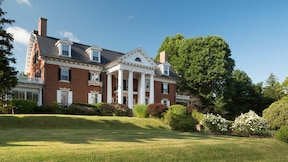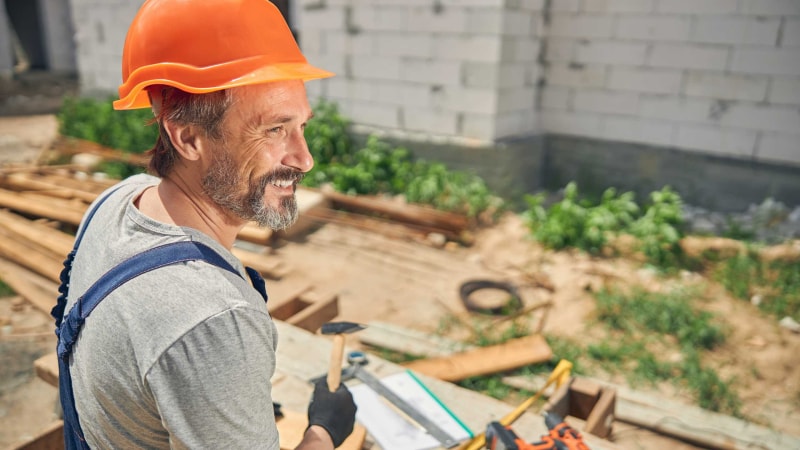Mortgage
Get answers and useful tips for buying, selling and maintaining a home, whether you're a first-time buyer or a seasoned homeowner.
Explore the options and trends in home finance
Mortgage terms can affect your long-term financial health as a homeowner. Find out the mortgage terms that are best for you.
MortgageHow long does it take to close on a house?

Learn how long it takes to close on a house, what to expect and how to make the closing process go smoothly.
MortgageTips for buying a house in a competitive market

Consider these tips for buying a house in a competitive market: act fast, be flexible with contingencies, and consider offering at or above the asking price.
Learn more about home ownership
Mortgage
Escrow refund: What is it and how does it work Escrow refunds occur when your mortgage lender collects more than was needed for property taxes and insurance. Learn more with Chase.
Escrow refunds occur when your mortgage lender collects more than was needed for property taxes and insurance. Learn more with Chase.Mortgage
What is a mortgage: A guide for new homebuyers What is a mortgage and what do you need to know before taking one on? Learn how they work and why they’re key to homeownership.
What is a mortgage and what do you need to know before taking one on? Learn how they work and why they’re key to homeownership.Mortgage
The pros and cons of paying property taxes through escrow vs. direct payment Paying property taxes separately from escrow may give you more financial control, but it also means you’ll be responsible for making timely payments.
Paying property taxes separately from escrow may give you more financial control, but it also means you’ll be responsible for making timely payments.Mortgage
How to add, change or remove a name on a mortgage Looking to update the name on your mortgage? Check out Chase's guide on how to add, change, or remove a name from your mortgage in a few quick and easy steps.
Looking to update the name on your mortgage? Check out Chase's guide on how to add, change, or remove a name from your mortgage in a few quick and easy steps.Mortgage
Understanding amortized loans and how to calculate mortgage payments Loan amortization refers to the repayment schedule for a loan, including a breakdown of interest and principal payments.
Loan amortization refers to the repayment schedule for a loan, including a breakdown of interest and principal payments.Mortgage
How to request PMI removal with Chase PMI removal for a Chase-owned loan is typically based on an automatic termination date, but there are situations when removal can be requested. Learn more.
PMI removal for a Chase-owned loan is typically based on an automatic termination date, but there are situations when removal can be requested. Learn more.Mortgage
How to buy a house out of state Learn how to buy a house out of state with confidence. Get tips to navigate the homebuying process.
Learn how to buy a house out of state with confidence. Get tips to navigate the homebuying process.Mortgage
A 15/15 adjustable-rate mortgage (ARM) explained Learn how a 15/15 adjustable-rate mortgage (ARM) works and whether it's a good fit for your home financing needs. Explore key features, risks and benefits.
Learn how a 15/15 adjustable-rate mortgage (ARM) works and whether it's a good fit for your home financing needs. Explore key features, risks and benefits.Mortgage
VA seller concessions: A complete guide VA seller concessions can lead to significant savings for homebuyers. This guide explores how to unlock these concessions to maximize your savings.
VA seller concessions can lead to significant savings for homebuyers. This guide explores how to unlock these concessions to maximize your savings.Mortgage
Zoning in real estate: Definition, types and more Zoning laws are regulations on what can be done to a property in certain areas. Learn about the different types of zoning laws and how to rezone a property.
Zoning laws are regulations on what can be done to a property in certain areas. Learn about the different types of zoning laws and how to rezone a property.Mortgage
How a mortgage note works Discover what a mortgage note is and how it works. Understand its impact on payment, loan terms and homeownership.
Discover what a mortgage note is and how it works. Understand its impact on payment, loan terms and homeownership.Mortgage
Understanding your VA entitlement Your VA entitlement measures how much of your VA loan is guaranteed and can affect the size of your down payment when buying or refinancing with a VA loan.
Your VA entitlement measures how much of your VA loan is guaranteed and can affect the size of your down payment when buying or refinancing with a VA loan.
Explore financial education